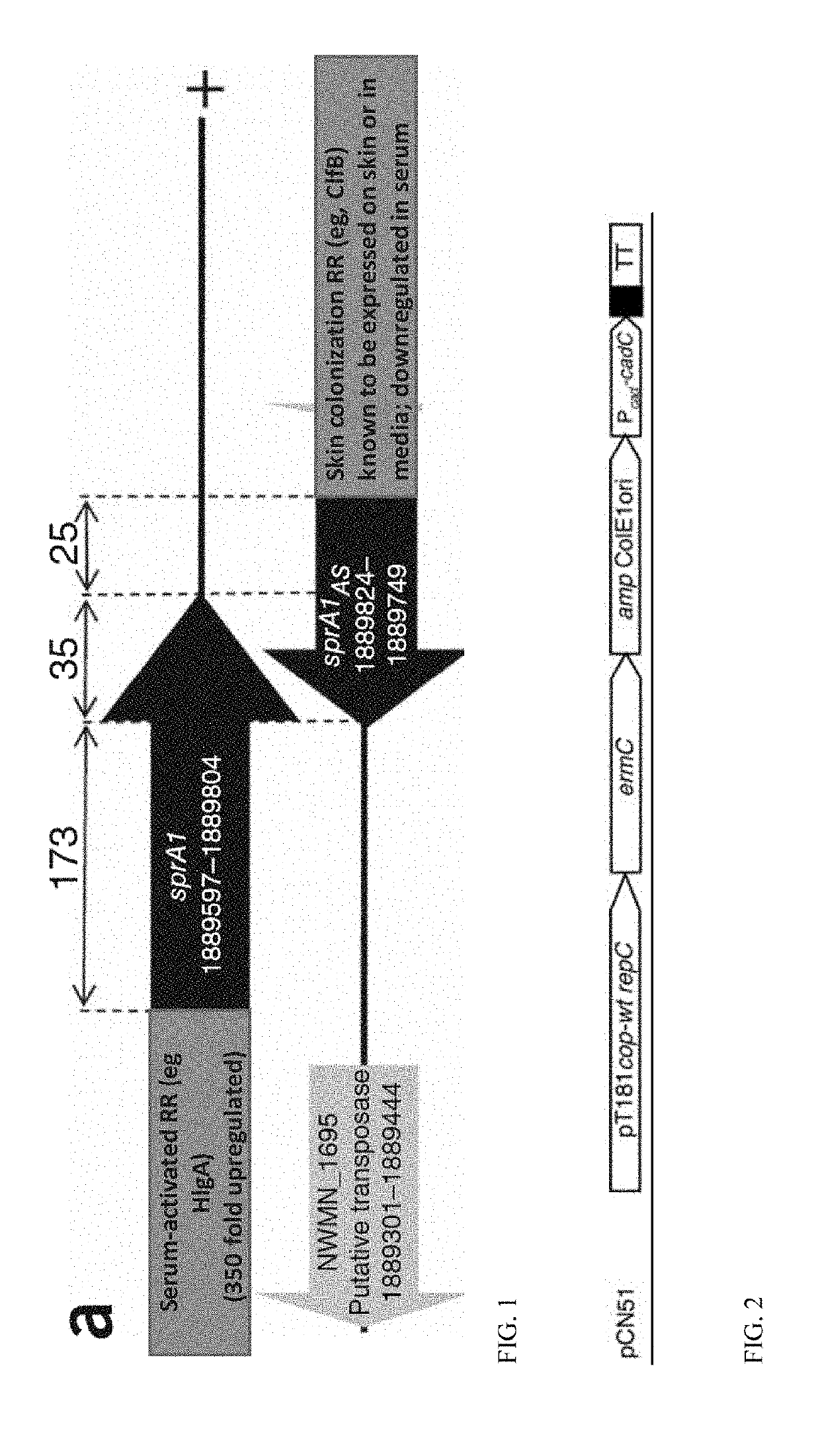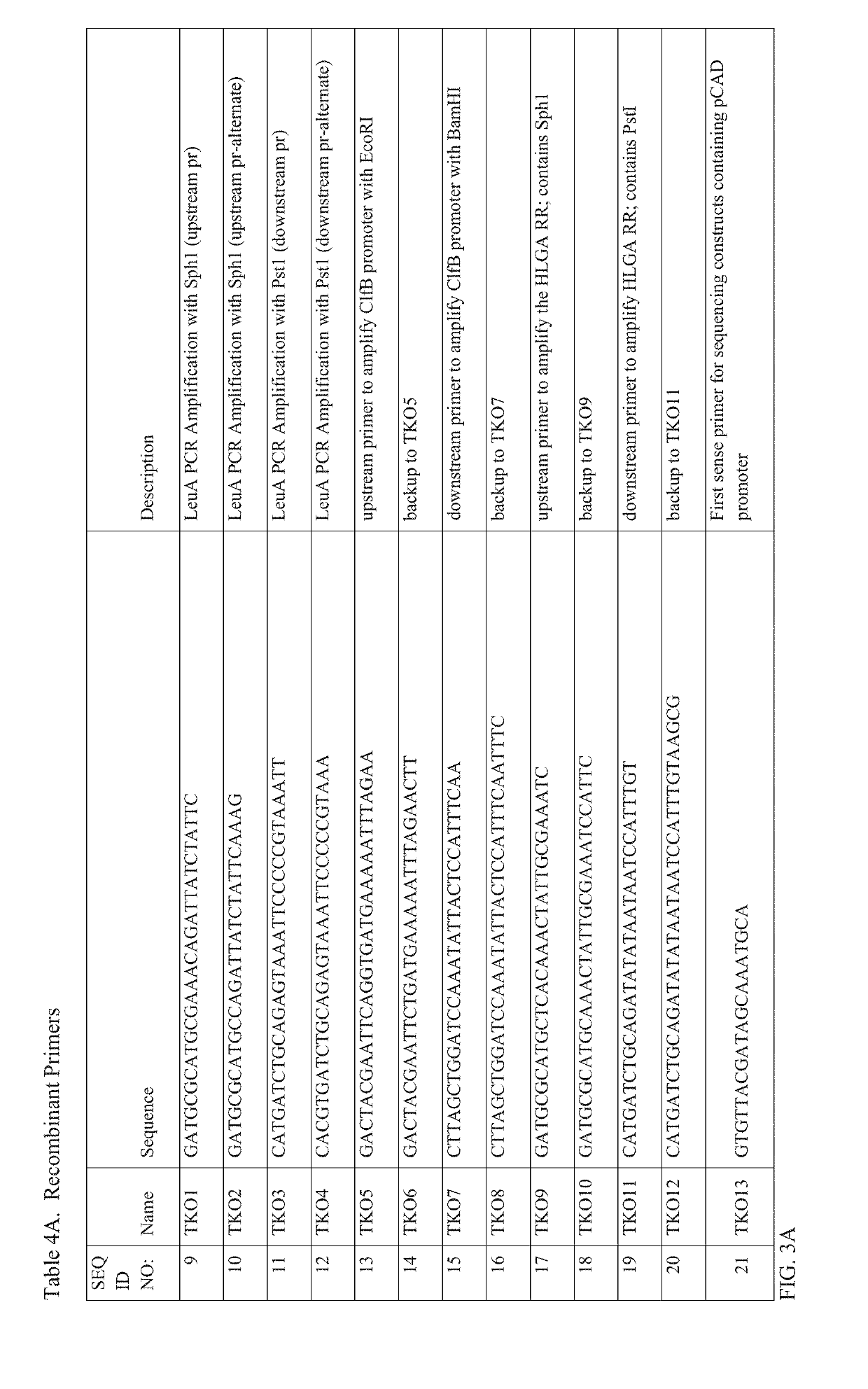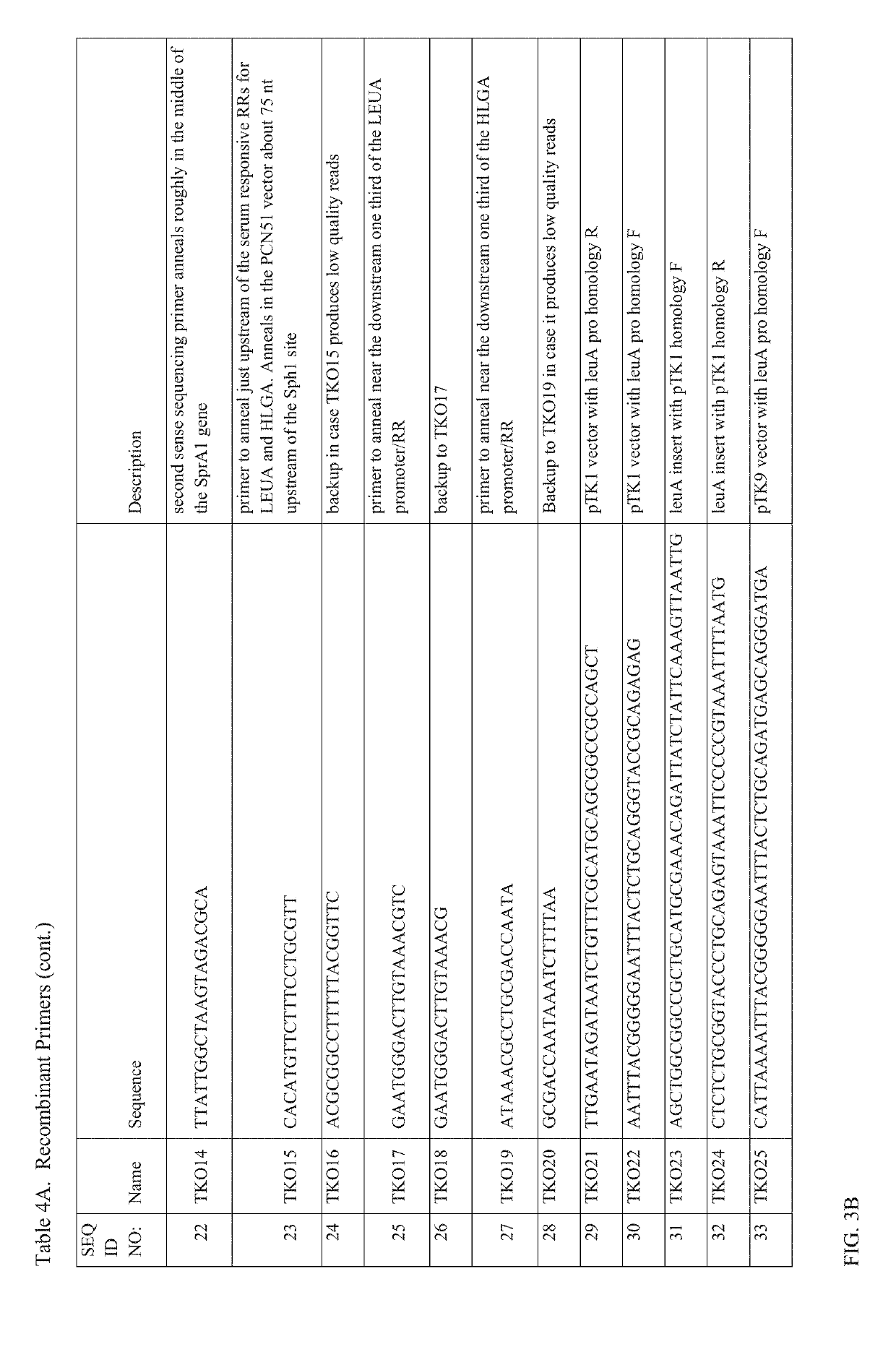Methods and compositions to prevent microbial infection
a technology of compositions and microbial infections, applied in the direction of bacteria material medical ingredients, antibacterial agents, peptides, etc., can solve the problems of serious and even life-threatening diseases, antibiotic resistant microorganisms, mismanagement of the microbiome, etc., to reduce the risk of infection and influence the risk of microorganisms. , the effect of safe and durable influen
- Summary
- Abstract
- Description
- Claims
- Application Information
AI Technical Summary
Benefits of technology
Problems solved by technology
Method used
Image
Examples
example 1
dies—Exclusionary Niche Using Benign Microorganism
[0628]Clinical Studies-Suppress and Replace
[0629]A clinical study was designed to identify MRSA positive subjects, suppress the MRSA strain, replace the MRSA by administering Bioplx-01 (i.e., MSSA 502a), and periodically retesting subjects for recurrence of MRSA. The study population was largely drawn from Meerut area Medical Personnel and Medical Students. No symptomatic subjects were enrolled in the study.
[0630]This is a “proof of principle” study, being performed with largely unimproved materials and methods—any result greater that 55% non-recurrence will be considered an indication of the potential efficacy of these methods. Any result at 80% or greater non-recurrence would be considered a strong indication of the current technical strength of this approach.
[0631]Study Purpose and Primary Endpoints:[0632]1) To determine the rate of asymptomatic Staphylococcus aureus and MRSA occurrence in the general population—Meerut, UP (North ...
example 2
of One or More Inducible Promoters
[0678]In this example, promoter candidates were evaluated. The fold-induction and basal expression of 6 promoter candidates in a MSSA strain BioPlx-01 were evaluated by incubation with human whole blood and serum. Expression was normalized to a housekeeping gene (gyrB) and was compared with that in cells growing logarithmically in liquid tryptic soy broth (TSB) media.
[0679]The BioPlx-01 was grown to mid log phase (2 OD / mL) and then washed in large volume and shifted to freshly collected serum and heparinized blood from donor TK.
[0680]The samples were incubated in slowly agitating vented flask at 125 rpm; and samples were removed for RNA isolation at 15, 45, or 75 min at 37° C. The collected bacteria were washed, and RNA was extracted using Qiagen Allprep kit, eluted and the RNA frozen. Coding DNA (cDNA) was prepared from RNA and target gene expression evaluated by real time PCR (Taqman) in an ABI 7500 Fast instrument.
[0681]Relative RNA levels were d...
example 3
of One or More Death Genes
[0694]In this example, cell death gene candidates are evaluated for preparing a synthetic microorganism having at least one molecular modification comprising a first cell death gene operably linked to a first regulatory region comprising a first inducible promoter. Relative potencies of death genes are unknown. What appears to be the best death gene is not necessarily the most potent one because of leaky expression. Diversity of mechanism of action could result in killing synergy for two or more death gene combinations. Death gene candidates include: SprA1: membrane disruption; sma1: genome destruction; and rsaE: blocks central metabolism. Various combinations of death genes are shown in Table 14. These plasmids are created and sequenced plasmids for testing of PleuA and PhlgA-driven KS variants.
TABLE 14Death Gene KS ConstructsStrain #Plasmid namePromoterKill gene (PCD)PurposeComments1pTK1CadmiumSprA1+controlCells in TSBinducibleshowstreated withsprA1SprA1C...
PUM
| Property | Measurement | Unit |
|---|---|---|
| time | aaaaa | aaaaa |
| time | aaaaa | aaaaa |
| time | aaaaa | aaaaa |
Abstract
Description
Claims
Application Information
 Login to View More
Login to View More - R&D
- Intellectual Property
- Life Sciences
- Materials
- Tech Scout
- Unparalleled Data Quality
- Higher Quality Content
- 60% Fewer Hallucinations
Browse by: Latest US Patents, China's latest patents, Technical Efficacy Thesaurus, Application Domain, Technology Topic, Popular Technical Reports.
© 2025 PatSnap. All rights reserved.Legal|Privacy policy|Modern Slavery Act Transparency Statement|Sitemap|About US| Contact US: help@patsnap.com



